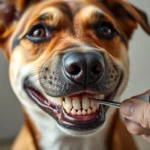
Introduction
Caring for our furry friends goes beyond just providing food and shelter; it encompasses their overall health and well-being. As dogs age, they often face various health challenges, particularly related to mobility. Mobility issues in older dogs can stem from several factors, including arthritis, joint pain, and general decline in physical fitness. One effective solution to aid these beloved companions is the use of dog ramps. These ramps can significantly enhance the quality of life for older dogs, allowing them to navigate their environment with greater ease. In this article, we’ll explore the best dog ramps for older dogs, focusing on their features, benefits, and how to choose the right one for your pet.
Understanding the Health Needs of Older Dogs
Common Health Issues in Older Dogs
As dogs age, they become more susceptible to certain health issues that can impact their mobility. Here are some prevalent conditions:
-
Arthritis and Joint Pain: Many older dogs suffer from arthritis, which is inflammation of the joints. This can lead to chronic pain and difficulty moving, making activities such as climbing stairs or getting into cars challenging.
-
Mobility Decline: Whether due to age or health conditions, older dogs may experience a general decline in mobility. This can be compounded by weight gain and muscle loss, further reducing their ability to move freely.
-
Vision and Hearing Impairments: Aging can also lead to sensory impairments. Dogs may develop cataracts or experience hearing loss, making them less aware of their surroundings and increasing the risk of accidents.
-
Weight Gain and Obesity: Many pet owners may not realize that older dogs require fewer calories due to decreased activity levels. This can lead to weight gain, which puts additional strain on their joints and exacerbates mobility issues.
Importance of Mobility Aids
Mobility aids, such as dog ramps, play a crucial role in enhancing the quality of life for older dogs. Here are some key benefits:
-
Improved Quality of Life: Ramps allow dogs to access areas they may otherwise struggle to reach, such as cars, beds, or furniture. This can lead to increased independence and happiness.
-
Benefits of Using Ramps Over Stairs: Ramps are generally safer for older dogs than stairs. They reduce the risk of falls and injuries, which can be particularly serious for dogs with existing health issues.
-
Reducing the Risk of Injury: By providing a stable and gentle incline, ramps can prevent the strain and impact that comes with jumping or climbing, thus minimizing the likelihood of injuries to the joints or back.
Key Features to Look for in Dog Ramps
When selecting a dog ramp for an older dog, there are several key features to consider:
Size and Weight Capacity
Choosing the right size ramp is essential. The ramp should be long enough to create a gentle incline, making it easier for your dog to use. Additionally, pay attention to the weight capacity to ensure it can safely support your dog’s weight.
Material and Durability
Dog ramps come in various materials, each with its pros and cons:
-
Plastic: Lightweight and often weather-resistant, plastic ramps are easy to move and store. However, they may not be as durable as other materials.
-
Wood: Wooden ramps can be aesthetically pleasing and sturdy, but they may also be heavier and less portable.
-
Aluminum: Aluminum ramps are strong and lightweight, making them a popular choice for many pet owners. They often have a non-slip surface, enhancing safety.
Surface Grip and Safety Features
A non-slip surface is crucial for preventing slips and accidents. Look for ramps with textured surfaces or rubber grips. Additional safety features, such as side rails or stabilizing supports, can provide extra security for your dog while using the ramp.
Portability and Storage
For many pet owners, the ability to easily store and transport a ramp is essential. Consider ramps that are lightweight and foldable, allowing for convenient storage when not in use.
Types of Dog Ramps for Older Dogs
There are several types of dog ramps available, each catering to different needs and preferences.
Folding Dog Ramps
Folding ramps are incredibly versatile and easy to store. They can be compacted for travel or storage, making them a favorite among dog owners.
- Advantages: Lightweight, portable, and easy to set up.
- Best Brands/Models: Look for brands such as PetSTEP and Gen7Pets, known for their quality and reliability.
Adjustable Height Ramps
Adjustable ramps allow you to customize the height to suit your dog’s specific needs. This feature is particularly beneficial for multi-level homes or for different vehicles.
- Benefits: Flexibility in height adjustment can accommodate various surfaces and prevent steep inclines.
- Recommendations: Brands like PetSafe and Trixie offer top-rated adjustable ramps that are user-friendly.
Fixed Ramps
Fixed ramps provide a permanent solution for homes or spaces where a ramp is consistently needed. They can be installed for easy access to furniture or vehicles.
- Pros: Stable and secure, fixed ramps are ideal for dogs that require consistent assistance.
- Cons: They can be less portable and more expensive than folding or adjustable options.
- Top Choices: Brands such as Solvit and Paws Aboard offer excellent fixed ramp options.
Top Picks for the Best Dog Ramps for Older Dogs
Review Criteria
When evaluating the best dog ramps, considerations include durability, safety features, user reviews, and overall value for money. Here are our top five recommended dog ramps:
Ramp 1: PetSTEP Original Folding Dog Ramp
- Features: Made from a durable, non-slip material; lightweight and easy to fold.
- Pros: Excellent grip, portable, and supports up to 300 pounds.
- Cons: Can be expensive for some budgets.
- Price: Approximately $129.95
Ramp 2: PetSafe Happy Ride Dog Ramp
- Features: Adjustable for different vehicle heights; lightweight design.
- Pros: Easy to set up, suitable for various vehicles, and non-slip surface.
- Cons: Limited weight capacity (150 pounds).
- Price: Approximately $119.99
Ramp 3: Trixie Adjustable Dog Ramp
- Features: Adjustable height; made of durable wood with a non-slip surface.
- Pros: Aesthetically pleasing, sturdy, and perfect for indoor use.
- Cons: Heavier than plastic options; requires assembly.
- Price: Approximately $99.99
Ramp 4: PetSafe Solvit PupSTEP Plus Pet Stairs
- Features: Sturdy, fixed steps with a slip-resistant surface.
- Pros: Great for smaller dogs and indoor use; easy to assemble.
- Cons: Not suitable for larger dogs; limited height.
- Price: Approximately $69.95
Ramp 5: Gen7Pets Natural-Step Dog Ramp
- Features: Unique natural wood design with a non-slip surface.
- Pros: Attractive, sturdy, and can accommodate larger dogs.
- Cons: Less portable than folding options.
- Price: Approximately $139.95
How to Introduce Your Dog to a Ramp
Introducing your dog to a dog ramp can take some time and patience. Here’s a step-by-step guide to help ease the transition.
Preparing Your Dog
Before introducing the ramp, assess your dog’s comfort level. If your dog is anxious about new objects, take your time and use positive reinforcement techniques.
- Using Treats: Encourage your dog to approach the ramp with treats or their favorite toy.
Step-by-Step Training Guide
-
Initial Exposure: Place the ramp in a familiar, low-stress environment. Allow your dog to investigate it without any pressure.
-
Encouraging Use: Gradually encourage your dog to step onto the ramp by placing treats along the surface. Start with a low incline to help build confidence.
-
Gradual Steps: Once your dog is comfortable, slowly increase the incline and encourage them to walk up and down the ramp.
Monitoring Progress
Keep an eye on your dog’s reaction during the training process.
-
Signs of Comfort: Look for relaxed body language and willingness to approach the ramp.
-
Signs of Anxiety: If your dog shows signs of stress, such as barking or avoiding the ramp, give them more time and try again later.
Additional Considerations for Older Dog Care
In addition to providing ramps, there are several other important aspects of caring for older dogs.
Regular Veterinary Checkups
Routine health assessments are vital for older dogs. Regular checkups can help identify potential health issues early on, allowing for timely intervention.
- Vaccinations and Preventive Care: Ensure your dog receives necessary vaccinations and preventive treatments to maintain their health.
Nutrition and Weight Management
Proper nutrition is crucial for older dogs.
-
Best Diets for Older Dogs: Look for high-quality dog food formulated specifically for senior dogs, focusing on joint health and weight management.
-
Supplements for Joint Health: Consider supplements such as glucosamine or omega-3 fatty acids to support joint mobility.
Exercise and Physical Therapy
Regular, low-impact exercise is essential for maintaining mobility in older dogs.
-
Importance of Exercise: Daily walks or gentle play can help keep your dog active without overexerting them.
-
Options for Physical Therapy: If your dog has severe mobility issues, consult your veterinarian about physical therapy options to improve strength and flexibility.
Conclusion
In conclusion, dog ramps for older dogs are invaluable tools that can significantly enhance the mobility and quality of life for our aging companions. By understanding the specific needs of older dogs and carefully selecting the right ramp, pet owners can provide their furry friends with the assistance they need to navigate their environment safely. Assessing individual needs and considering factors such as size, material, and safety features will help ensure that your dog continues to lead an active and fulfilling life.









